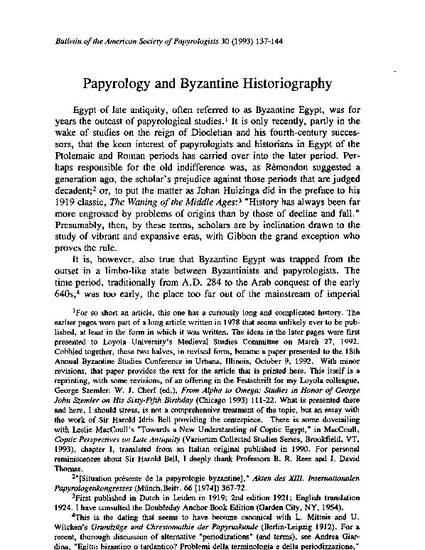
Egypt of late antiquity, often referred to as Byzantine Egypt, was for years the outcast of papyrological studies. It is only recently, partly in the wake of studies on the reign of Diocletian and his fourth-century successors, that the keen interest of papyrologists and historians in Egypt of the Ptolemaic and Roman periods has carried over into the later period. Perhaps responsible for the old indifference was, as Remondon suggested a generation ago, the scholar's prejudice against those periods that are judged decadent; or, to put the matter as Johan Huizinga did in the preface to his 1919 classic, The Waning of the Middle Ages: "History has always been far more engrossed by problems of origins than by those of decline and fall." Presumably, then, by these terms, scholars are by inclination drawn to the study of vibrant and expansive eras, with Gibbon the grand exception who proves the rule.
© 1993 James Keenan.

Author Posting. © James Keenan, 1993. This article is posted here by permission of the American Society of Papyrologists for personal use, not for redistribution. The article was published in Bulletin of the American Society of Papyrologists 30, 1993.